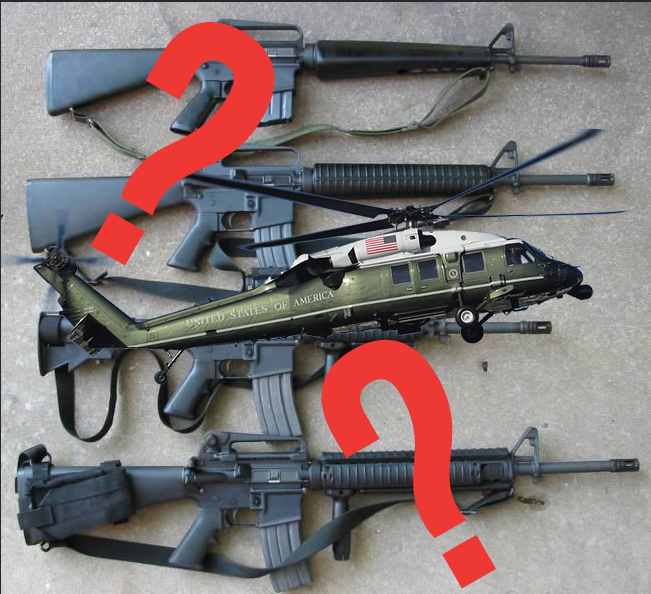Researchers from MIT have recently found a way to trick Google’s image search engines and identifiers into confusing a popular photograph on the internet of three M16s (and one M4) representing chronological development as a helicopter. Check out the article on Wired for a more detailed description of the methodology used in the study. Essentially what it boils down to is that the MIT researchers tweaked this original image by slowly superimposing another image of a helicopter onto it, pixel by pixel. To a casual observer, the difference is barely noticeable between the two. But to Google, one is classified as a rifle, while the other is classified as a “helicopter”.
A point must be made here in that the MIT researchers simply used firearms as an example of a technological flaw they were studying. The same results of confusion could be replicated with a wide variety of objects (for example, they got the algorithm to label a cat as guacamole).
From the Wired report–
The researchers didn’t just tweak the photos randomly. They targeted the AI system using a standard method. Each time they tried to fool the AI, they analyzed their results, and then intelligently inched toward an image that could trick a computer into thinking a gun (or any other object) is something it isn’t.
The researchers randomly generated their labels; in the rifle example, the classifier “helicopter” could just as easily have been “antelope.” They wanted to prove that their system worked, no matter what labels were chosen. “We can do this given anything. There’s no bias, we didn’t choose what was easy,” says Anish Athalye, a PhD student at MIT and one of the lead authors of the paper. Google declined to comment in time for publication.
This isn’t the first time an attempt like this has been successful. Earlier in October a separate team at MIT was successful in duping a similar Google algorithm into identifying a 3D printed turtle as a rifle as well.
The implications of this study might be far reaching when it comes to anything small arms related online, whether through illicit activities or perfectly legal ones. Because of the very reason that MIT has shown Google’s algorithms can work both ways. Someone using a Google service could be marketing illicit small arms and use this method to conceal a Glock 19 for example as a couch. However, someone marketing a product with nothing to do with small arms could be potentially tagged as selling an MG42 on eBay for example.
It is important to take note of these findings in this age of Youtube firearms channel demonetization efforts or even the elimination of legally operating Facebook firearms trading groups. Something I always point out in the second issue is that the illicit groups in the MENA region that are peddling everything from AKMs to mortars are left completely untouched. Whether this is due to Facebook not particularly interested in the MENA region or has realized that a lawsuit originating from that part of the world is highly unlikely.
 Your Privacy Choices
Your Privacy Choices
